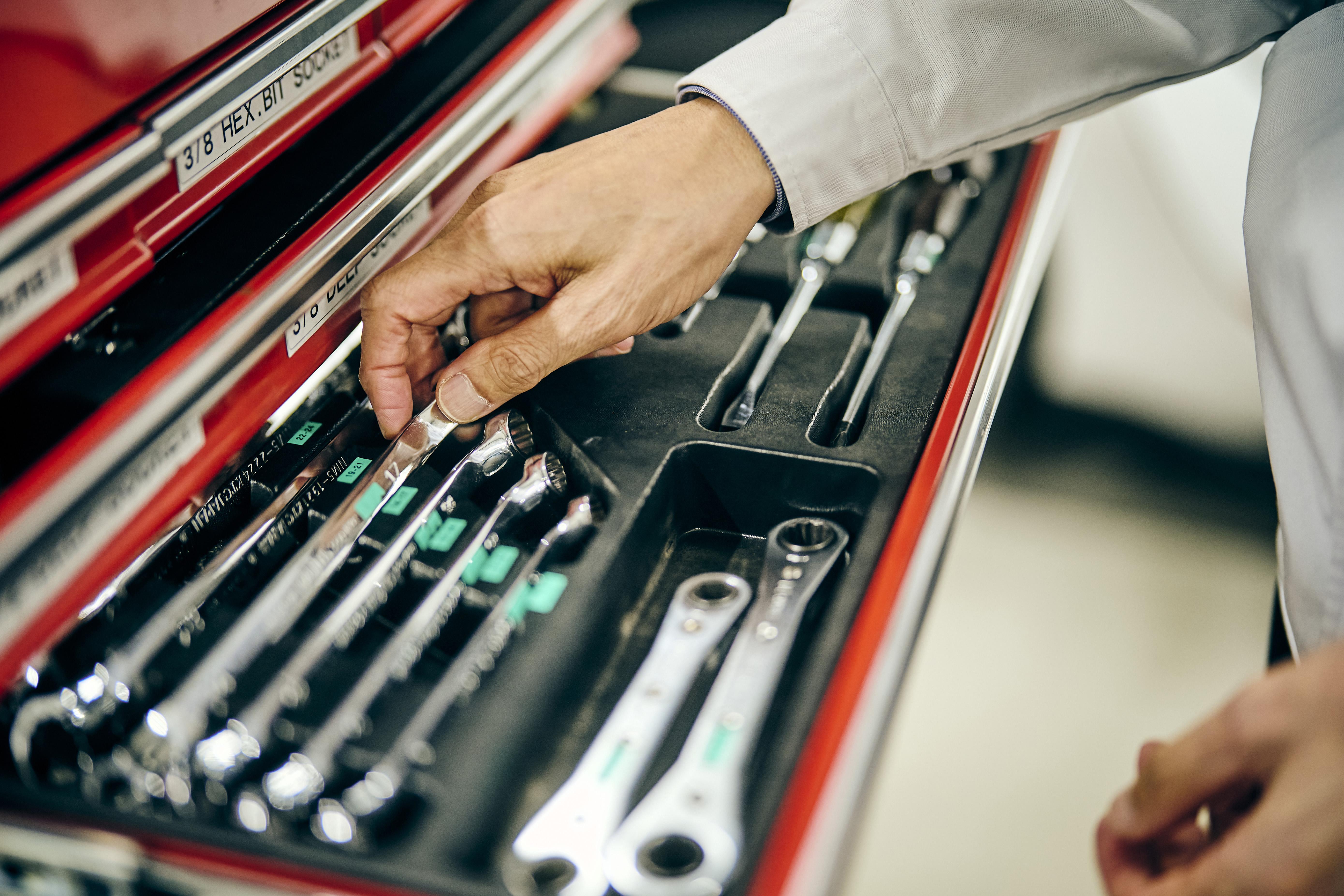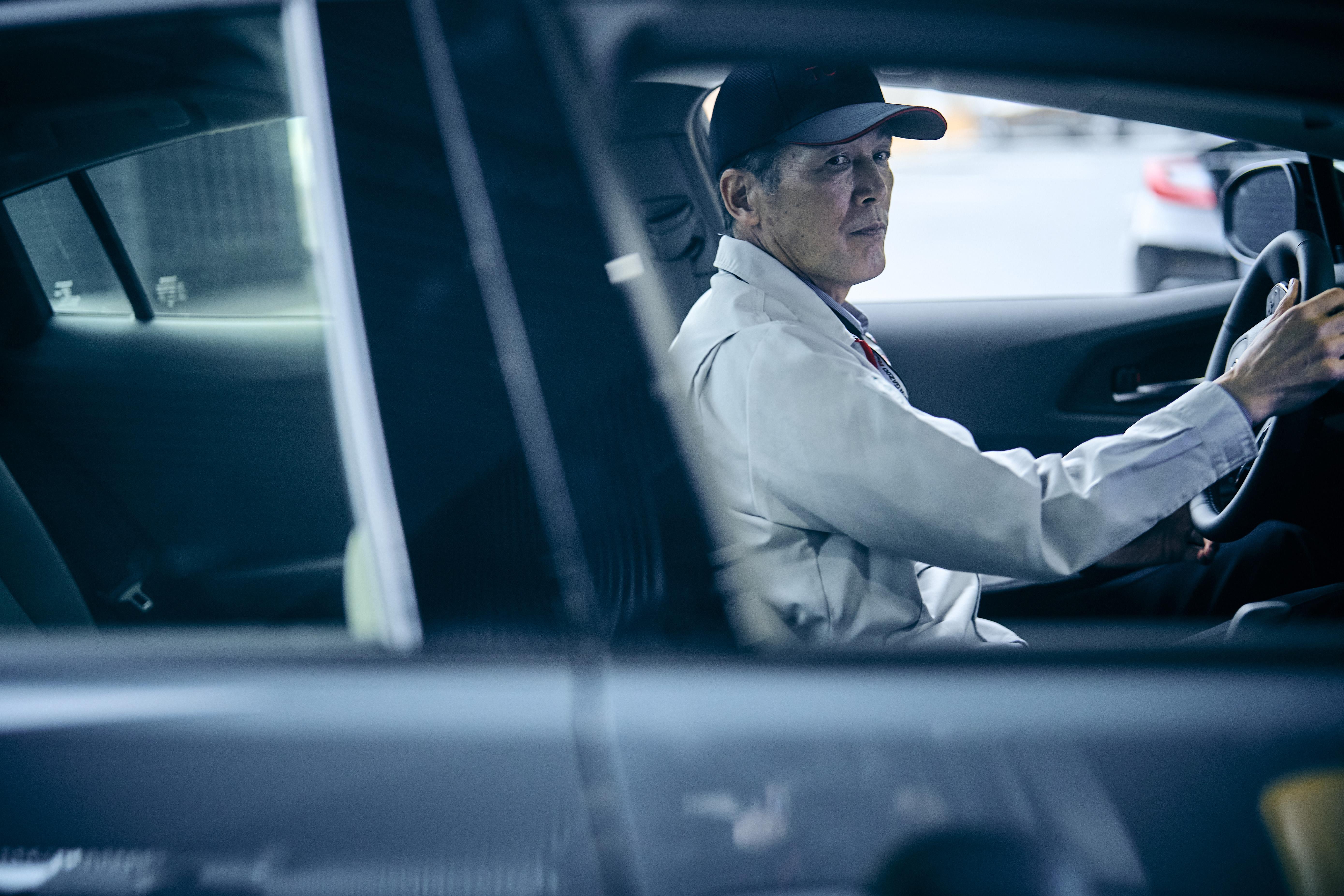
Part of an ongoing feature dissecting the Advanced Technical Skills Institute Division, a key facility for making ever-better cars, this article delves into the unquantifiable factor of driving feel.

The Advanced Technical Skills Institute Division is tasked with training Toyota’s test drivers. This article examines the skills involved, as well as the quest, led by master driver Akio Toyoda, to create the distinct “flavor” of Toyota cars.
Do compact cars and sports cars actually feel the same from behind the wheel?
Sensing changes that don’t show up in the data
Last time, we defined the test driver’s skills as the ability to “do, understand, and tell.” But how much of a difference can they really detect in testing?
This probing question was kindly answered with an example by Akihiro Osaka.
Osaka

Take for instance the spot welds used on car bodies. Test drivers can sense the effects of even a single additional spot weld.
The steel wheels are welded in four or five places at a length of 50mm. If this is 5mm longer, we can tell the difference.
“That said...” continues Osaka.
Osaka
You don’t need to be a test driver to notice that a certain phenomenon has occurred. But ordinary drivers are unable to point out the causes, whether it’s a suspension issue or the body is not rigid enough.
We push the cars to the limit and find any flaws. Unless you have experience in switching out and replacing various parts to improve cars, you can’t pinpoint the causes.
These days, all kinds of instruments have gotten better at measuring car performance. Despite that, a single extra spot weld will not show up in the numbers. Humans can detect such things with greater sensitivity.
Even the latest digital tools fail to quantify many aspects of comfort as perceived by humans.
Certain things can only be appreciated by people, and that is why Toyota invests time and effort in hands-on development. This is the starting point of manufacturing, which must not be forgotten. And it makes a big difference.

At present, Toyota has five levels of test vehicle driving qualifications: Beginner, Intermediate, Advanced, S1, and S2. The training is not simply about driving skills but also the psychological side, emphasizing the ability to maintain a calm mental state when testing cars.
S1 drivers above the Advanced level even have lap-time targets. Drivers are also entrusted with judging safety and may abandon a test run if they deem a development vehicle to be in an unsafe condition.
Test drivers who possess these abilities at the highest level receive S2 certification.

The skills required of an S2 driver include the ability to quickly push a car to its limits, even when driving a particular course or vehicle for the first time, and to consistently clock runs with less than 1 second variation from the given lap time.
They must also be able to safely decelerate after hitting speeds of 250km/h.
Toyota’s commitment throughout the financial crisis
One surprising fact is that Toyota is home to some 200 of these highly skilled S2 drivers.
This large contingent of highest-level S2 test drivers is even more remarkable given that an Advanced qualification is sufficient to work in vehicle evaluation.

Training test drivers is a costly exercise. And yet, as Project General Manager Hisashi Yabuki tells proudly, “Neither the financial crisis nor the pandemic dented our commitment to developing talent.”
As a company seeking to make ever-better cars, Toyota has a deeply rooted culture of valuing its human resources.

